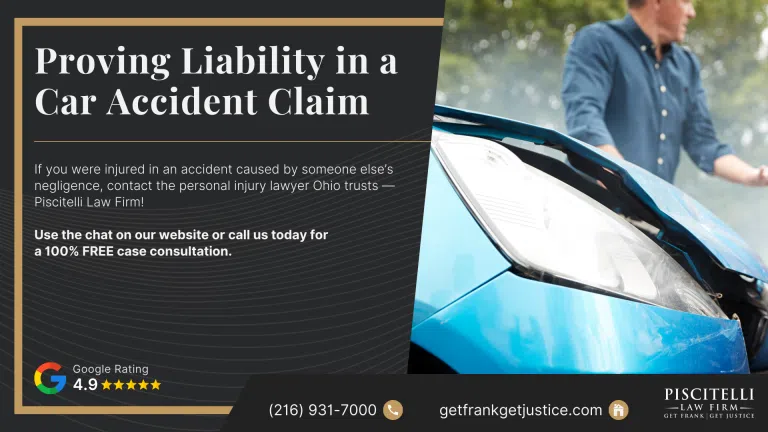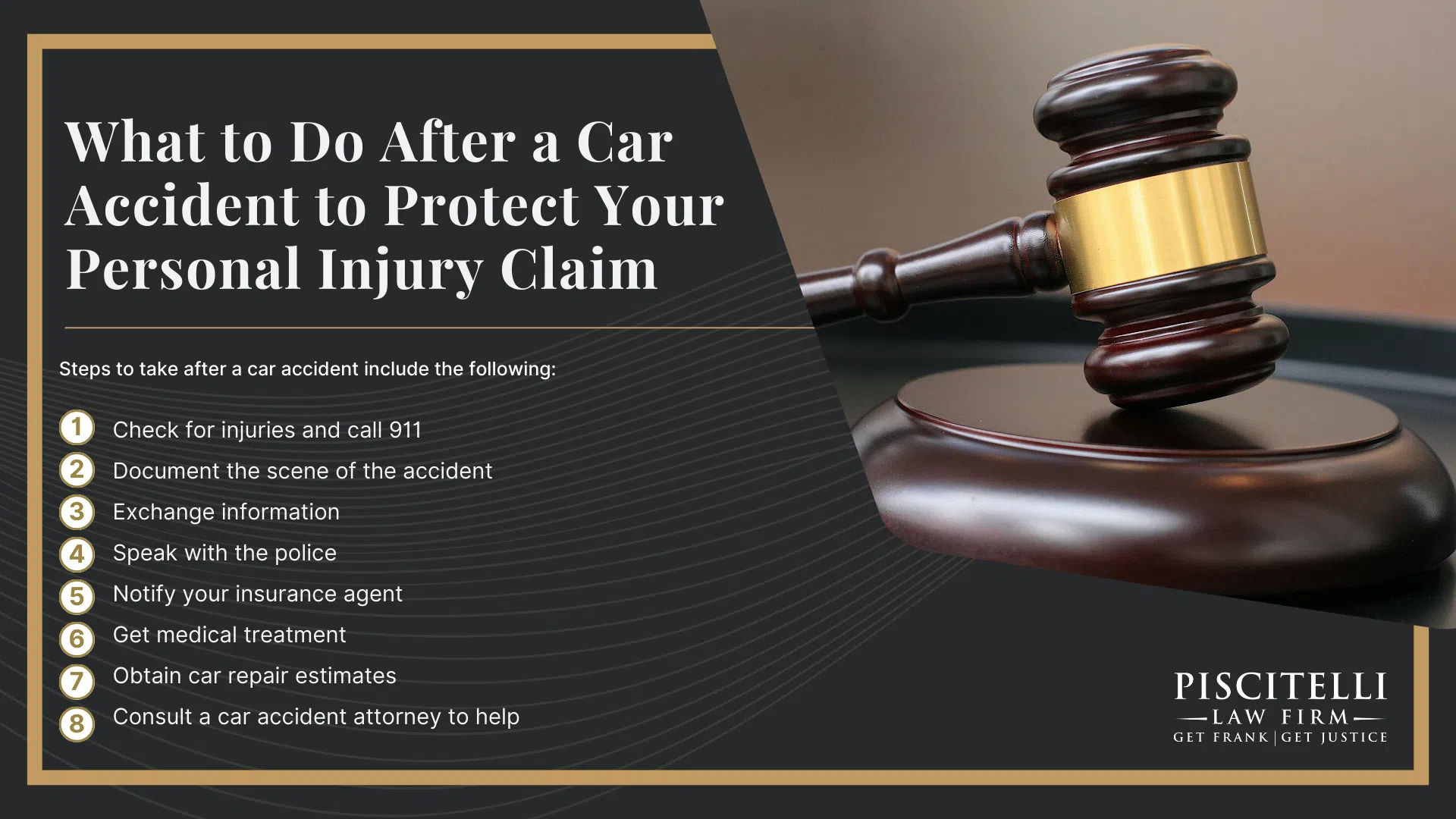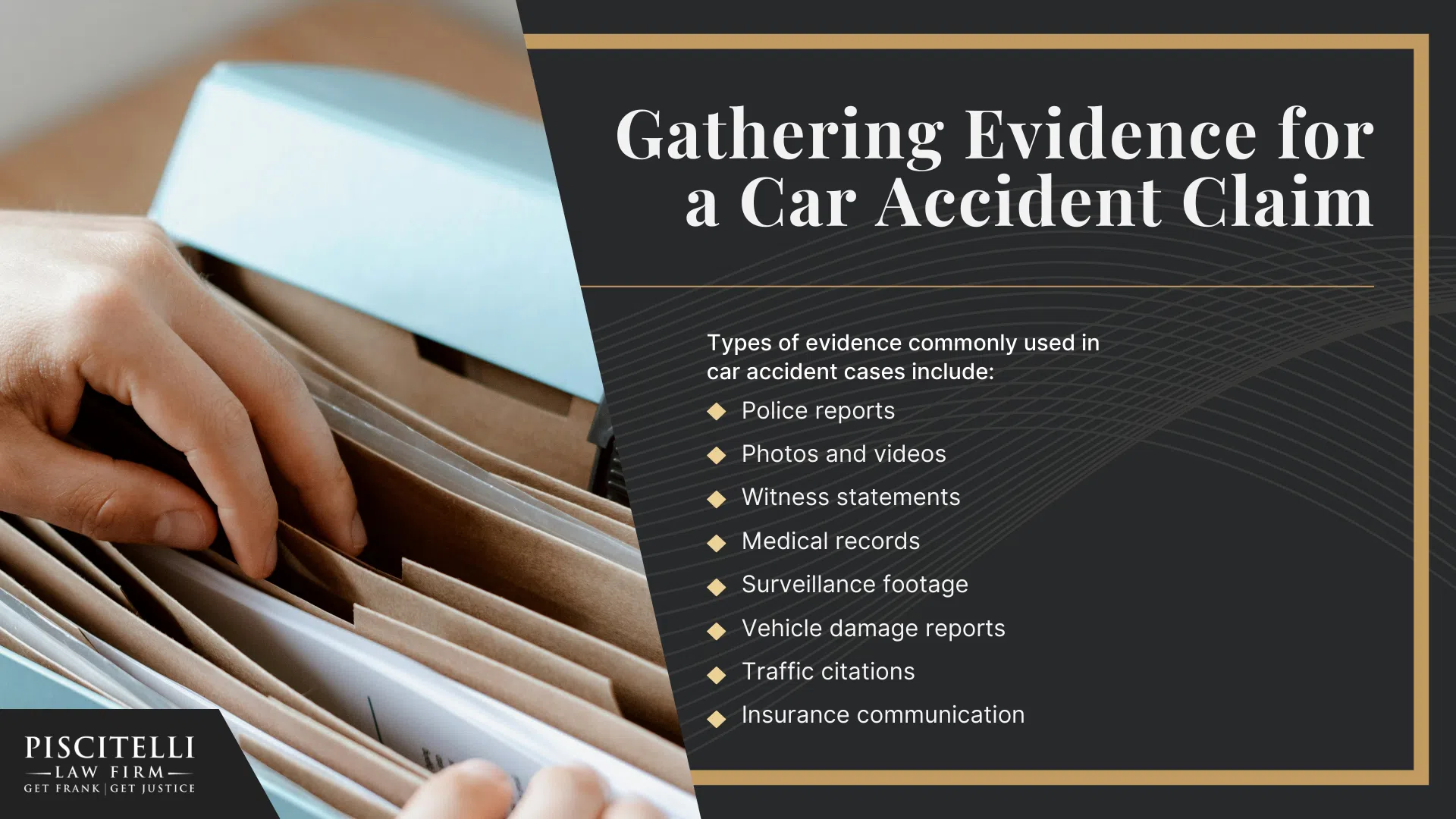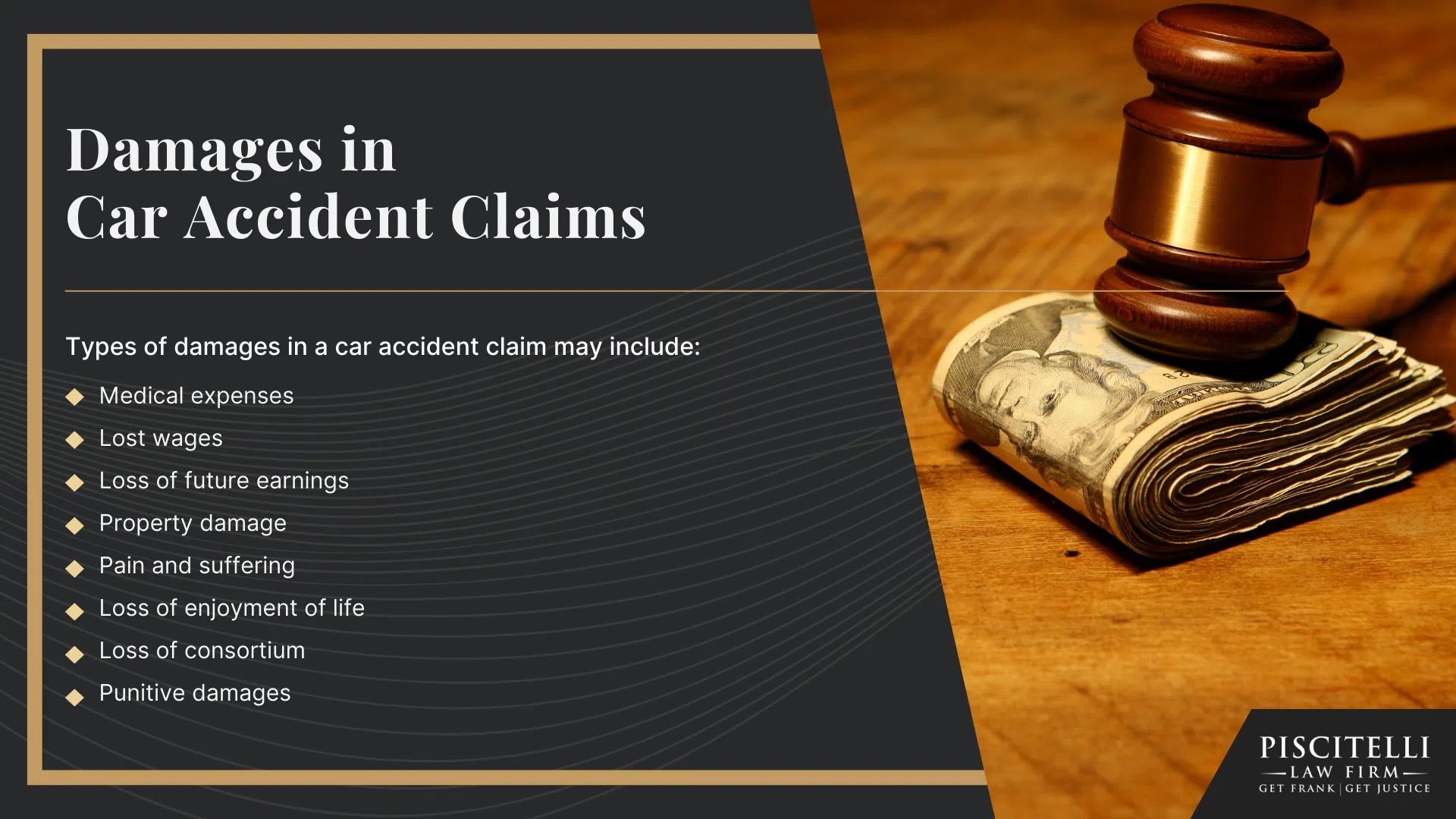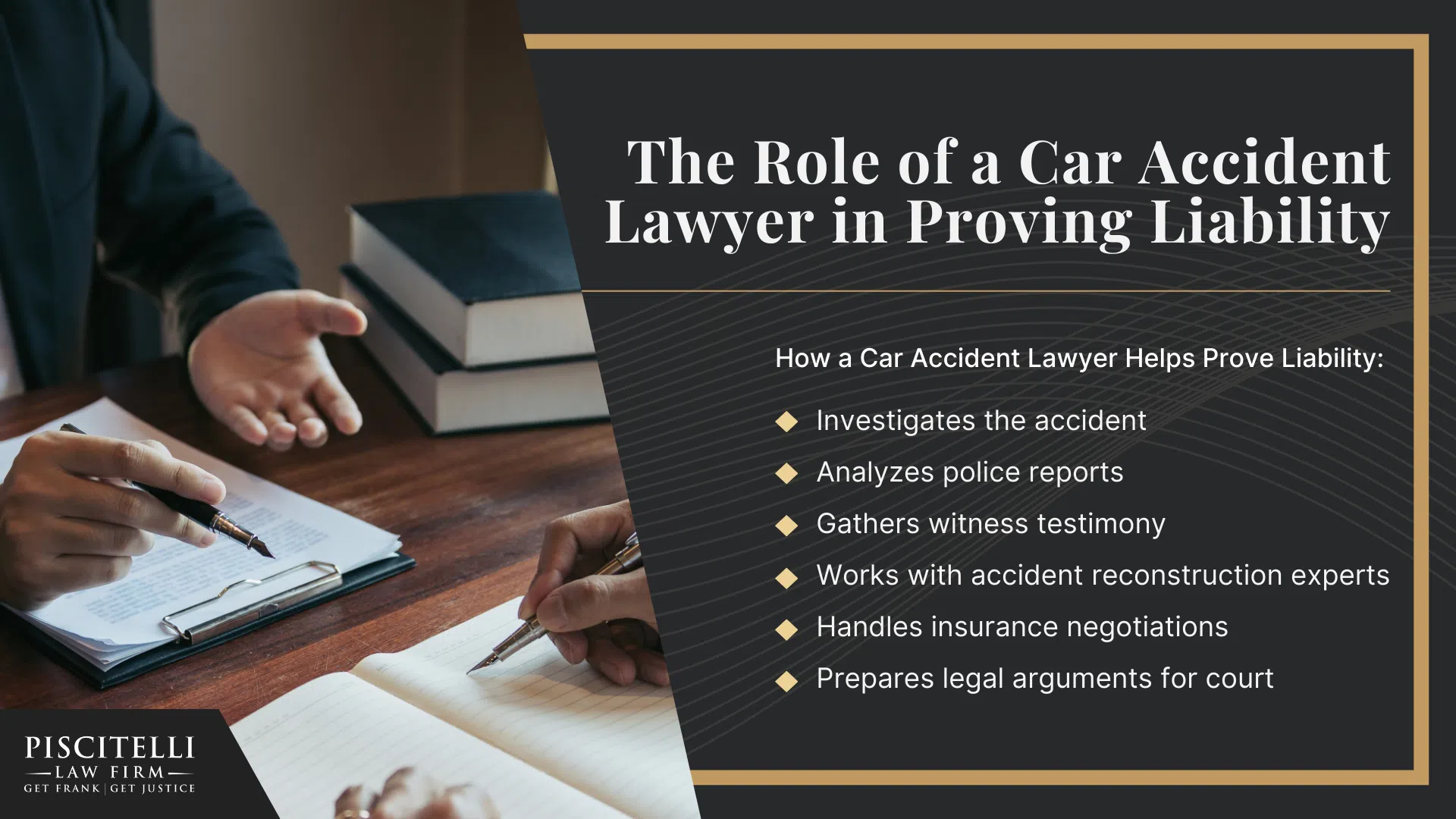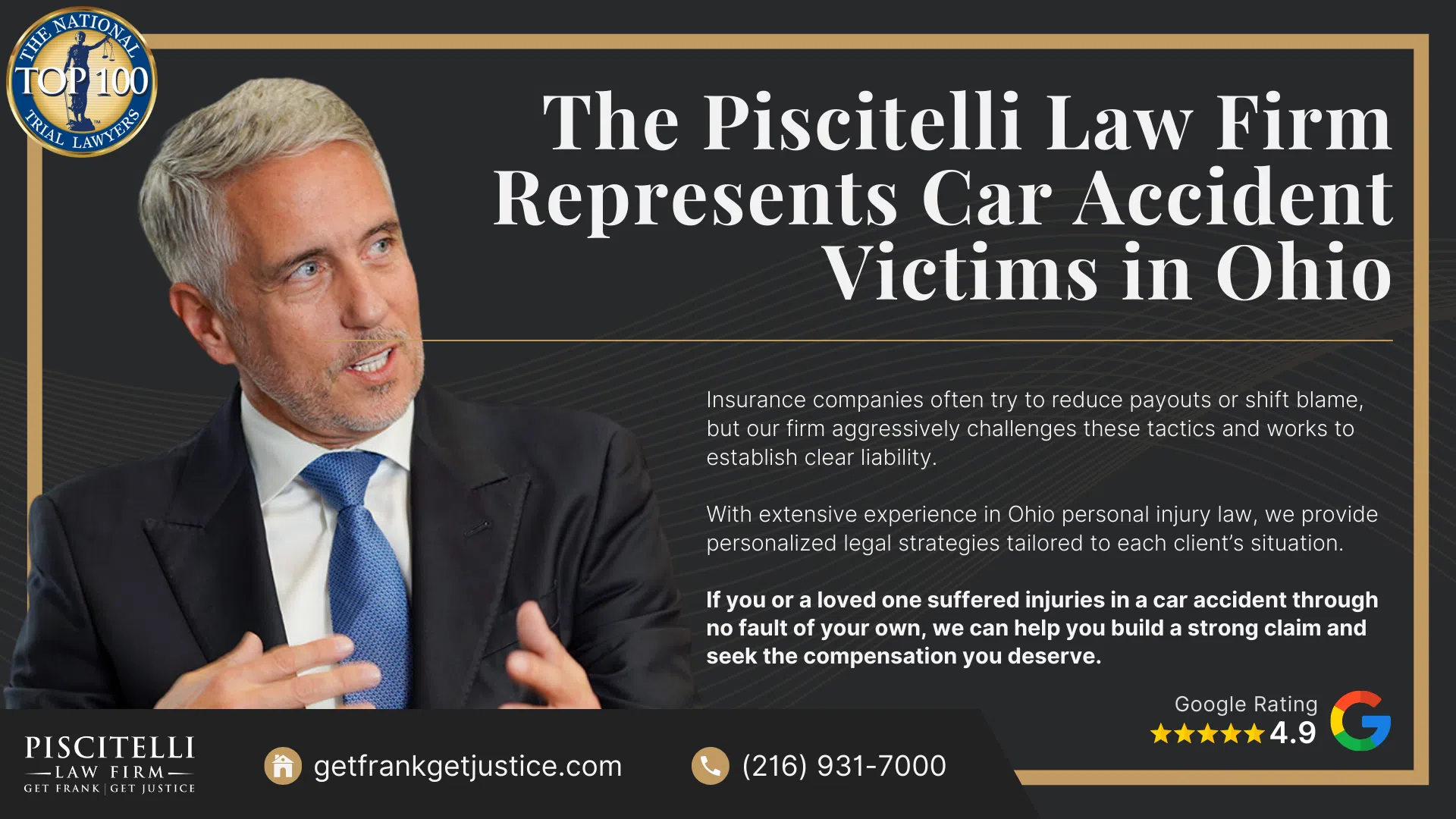To hold the at-fault driver accountable after a crash, you must prove that their negligence directly caused the accident and your resulting serious injuries or vehicle damage.
Ohio’s legal liability system follows comparative negligence, meaning you can still recover damages even if you share some responsibility, as long as you are 50% or less at fault.
Insurance companies, including the other party’s insurance, will often try to minimize payouts, making it essential to provide clear and compelling evidence.
Auto insurance adjusters will evaluate fault based on police reports, witness statements, and any available video footage, but their goal is to protect their company’s bottom line, not maximize your compensation.
A car accident lawyer can help you through the claims process, challenge unfair fault determinations, and negotiate with insurers to make sure you receive fair compensation.
If settlement negotiations fail, filing a personal injury lawsuit may be necessary to secure full damages.
Your own auto insurance policy may include collision coverage, which can help pay for vehicle damage while liability is being determined.
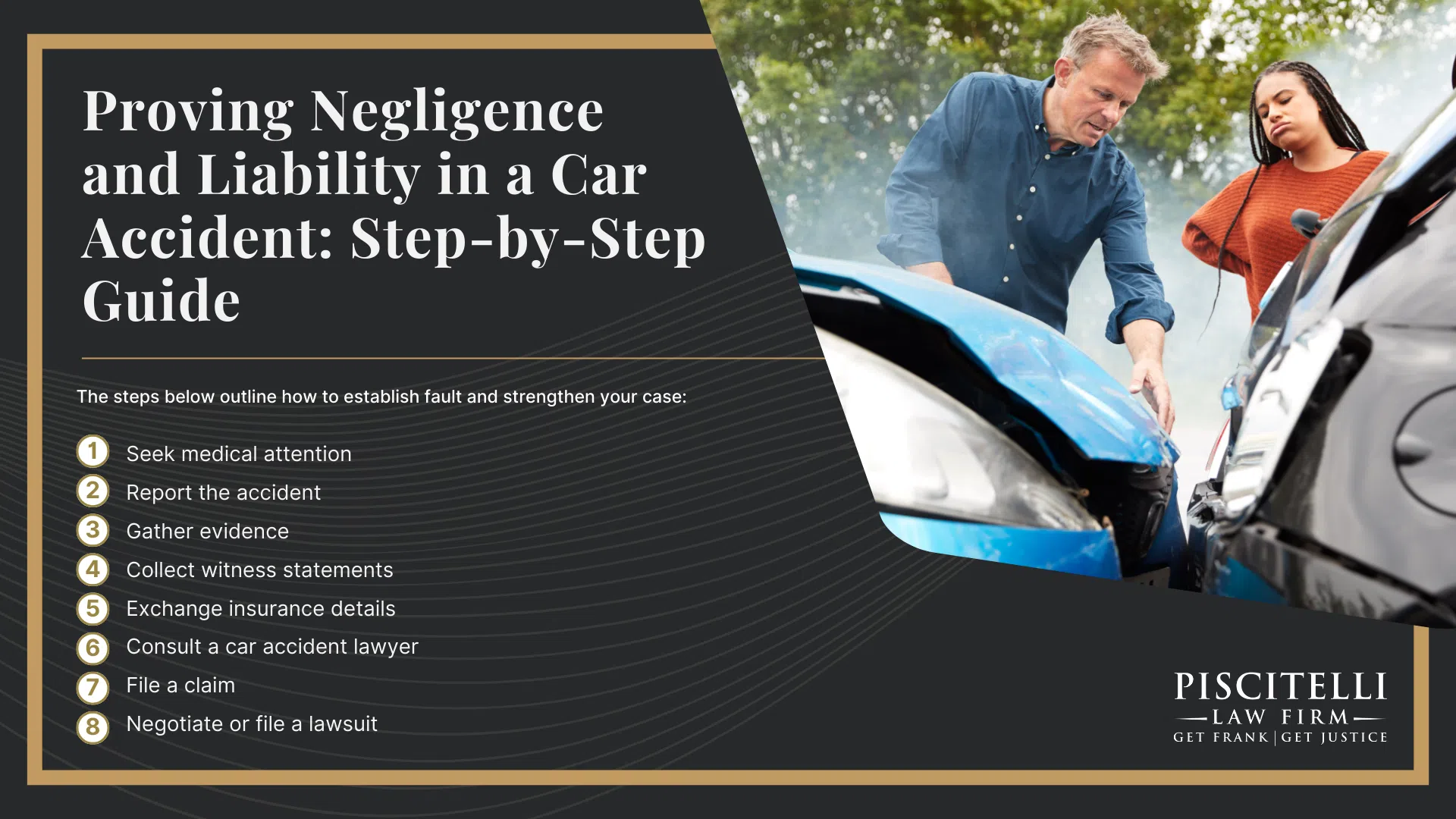
The steps below outline how to establish fault and strengthen your case:
- Seek medical attention – Document serious injuries immediately, as medical records serve as key evidence.
- Report the accident – Call law enforcement to file an official accident report.
- Gather evidence – Take photos of vehicle damage, injuries, and road conditions.
- Collect witness statements – Get contact information from drivers involved and bystanders.
- Exchange insurance details – Obtain the at-fault driver’s auto insurance policy information.
- Consult a car accident lawyer – An attorney can handle auto insurance adjusters and legal filings.
- File a claim – Submit a report to the other party’s insurance to begin the settlement process.
- Negotiate or file a lawsuit – If a fair settlement isn’t offered, a personal injury lawsuit may be necessary.
What is the Legal Definition of Negligence in Ohio?
In Ohio, negligence is legally defined as a failure to exercise the care that a reasonably prudent person would under similar circumstances, resulting in harm to another party.
This concept is central to personal injury cases, where the injured party must demonstrate that the defendant’s lack of due care directly caused their injuries.
Ohio operates under a modified comparative negligence system, allowing plaintiffs to recover damages if they are 50% or less at fault for the incident; however, their compensation is reduced proportionally to their degree of fault.
If a plaintiff’s fault exceeds 50%, they are barred from recovering any damages.
To establish a negligence claim in Ohio, four essential elements must be proven: duty of care, breach of that duty, causation, and actual damages.
The defendant must have owed a legal duty to the plaintiff, breached that duty through action or inaction, and caused harm resulting in measurable damages.
Understanding these components is vital for anyone involved in a personal injury case in Ohio.
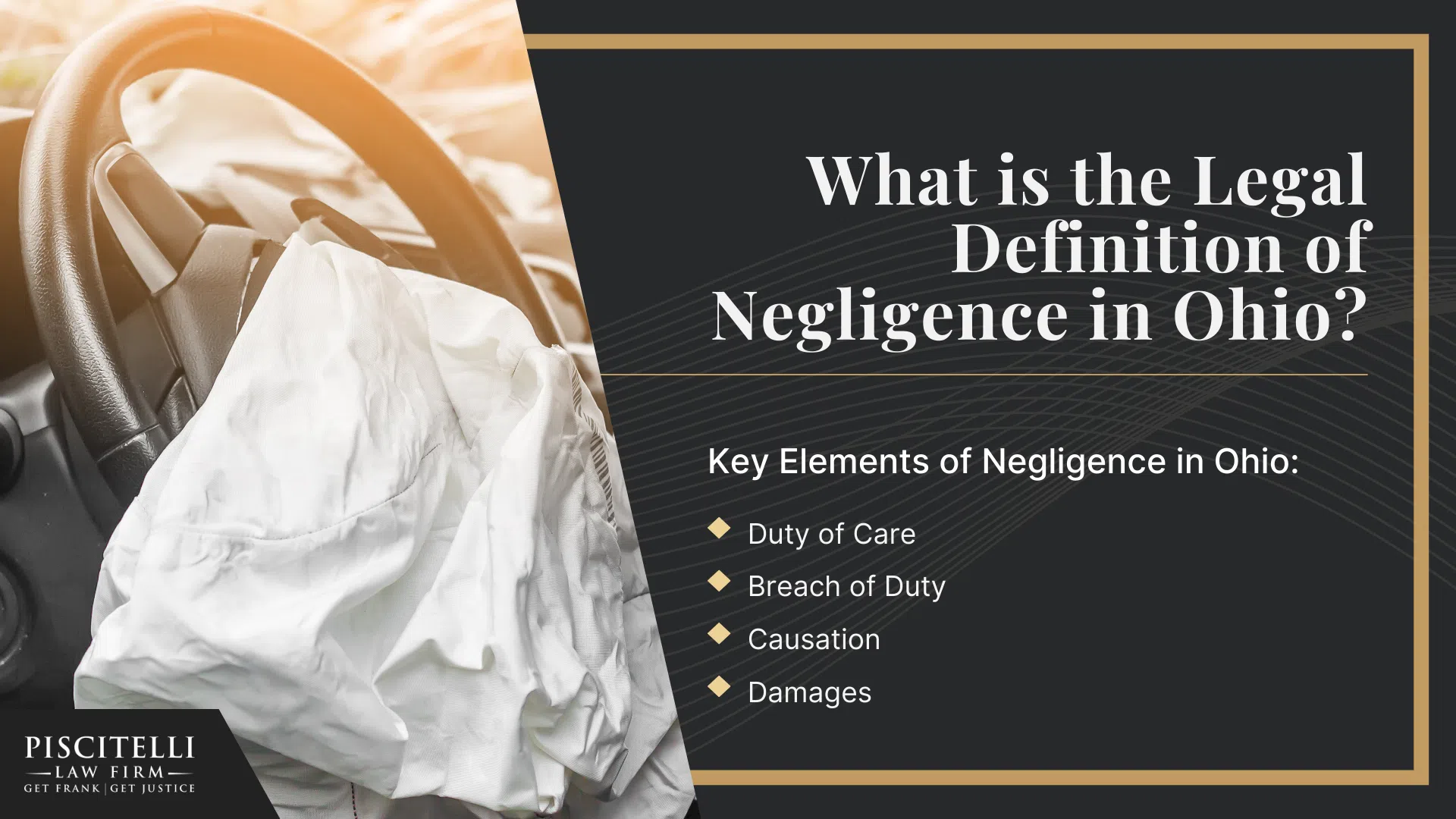
Key Elements of Negligence in Ohio:
- Duty of Care: The obligation to act with the level of care that a reasonable person would in similar circumstances.
- Breach of Duty: Failure to meet the standard of care, either through action or omission.
- Causation: A direct link between the breach of duty and the harm suffered by the plaintiff.
- Damages: Actual losses or injuries sustained by the plaintiff as a result of the breach.
These elements collectively form the foundation of negligence law in Ohio and are crucial in personal injury litigation.
Is Ohio a No-Fault State for Car Accidents?
No, Ohio is not a no-fault state for traffic accidents—it follows a fault-based system, meaning that the driver responsible for the vehicle-caused accident is liable for the damages.
Under this system, injured parties must file a personal injury claim against the at-fault driver’s insurance to recover compensation for medical bills, lost wages, and other damages.
Ohio law requires all drivers to carry liability insurance to cover injuries and property damage they cause, but many drivers also choose to add uninsured and underinsured motorist coverage to protect themselves if the at-fault driver lacks sufficient insurance.
Ohio’s traffic laws govern how liability is determined, and insurers will review accident reports, witness statements, and evidence to assign fault.
Unlike no-fault states, where each driver typically seeks compensation from their own insurance regardless of fault, Ohio’s system allows victims to pursue claims directly against the negligent party.
This means proving liability is essential when seeking damages after a traffic accident.
An experienced personal injury attorney can help victims through the claims process and fight for fair compensation.

